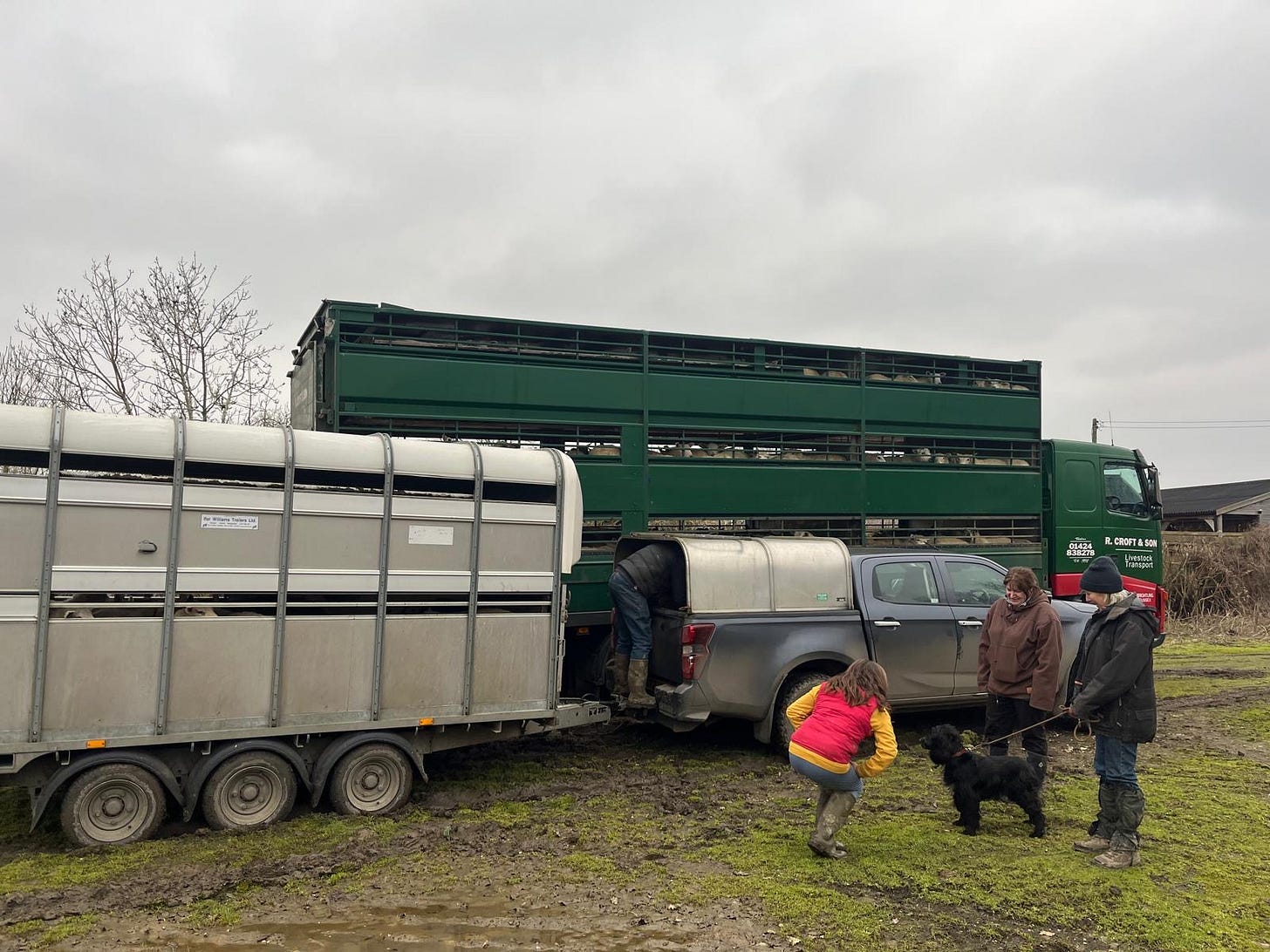How bloody exciting. Paul the sheep guy (big up), his family, and two hundred and sixty-eight sheep arrived near two in the afternoon, all squashed nicely into one massive truck and one small trailer. A quick bit of electric-fencing, and within half an hour, they’re all out to graze. Like a well-oiled machine.
This is the first time that this land has had any grazing livestock for at least forty years. That figure is a conservative guess, no-one that I asked could quite remember: in reality, it’s probably closer to eighty, before my grandfather came to Kent in the first place.
Why does any of this matter? Well, there are two answers: one theory, one not.
The theory answer says something like the following. Almost all wild terrestrial ecosystems have grazing animals of some form. Agriculture can become more ecological by mimicking these wild systems as much as possible. Grazing, when done well, is a vital part of healthy ecosystems: grass’ evolutionary strategy, generally speaking, has focused on being edible1, and as such grasses are generally healthier when grazed. Various forms of life, both above and below ground, find their niche amongst grazing livestock. Livestock will also graze all of the weeds, namely rye-grass and charlock, and so will stop these plants creating more seed, and adding to the weed seed bank. One of the central tenets of “regenerative agriculture” is to ensure grazing livestock are present in some form as part of the rotation. In short, livestock can help improve soil health. This, at least, is what I’ve been taught.
The not theory answer says something like the following. All of this is a grand experiment, and I am very much figuring it out on the job. I want to do this to try to learn more, specifically to learn how much of all of that theory stuff is useful. Some people I trust have said that this is a good idea. This will force me to pay attention: What extra insects have I noticed, if at all? What about a shovel of soil, how has that changed? Have the sheep grazed the rye-grass as much as I would like, or have they been selective? Has the weed burden actually reduced at all? Eventually you have to learn by doing.
But anyway, that’s enough words for now. Sheep are here, at least for the next few months. And when they’re gone, if it stays dry enough, we’ll put some spring wheat in the ground, and pray for a good harvest. How bloody exciting.
Unlike trees, whose strategy is, generally speaking, to grow tall, up out of reach of grazers, and for their trunks to be decidedly inedible.




Do you lime your ground? Is that good or bad practice?